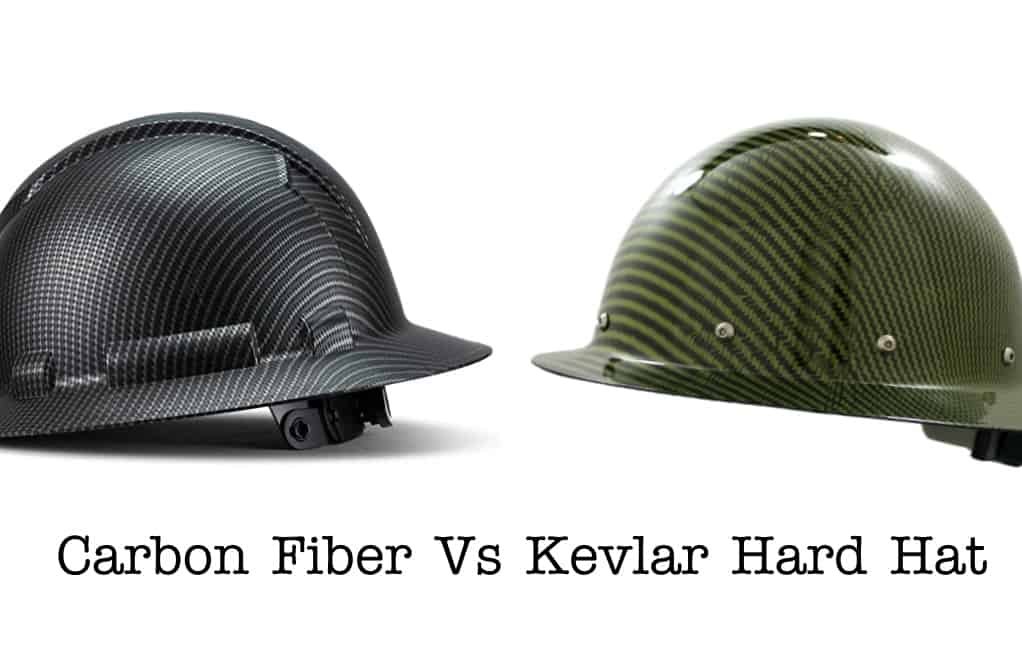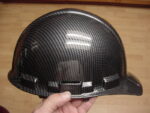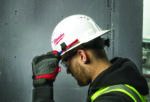On construction sites, hard hats are the greatest way to protect yourself against serious, life-altering injury or death.
The principal reasons for requiring hard hats in the workplace are to protect employees from head trauma caused by falling objects or bumping into something that can cause potential damage.
Workers can also be protected from toxic sprays, rain, extreme heat, and UV light by wearing protective headgear.
Hard hats are an essential protective gear required while operating scissor lift as the known hazards that can happen are:
-
-
- Falling objects on your head,
-
-
-
- Employees tripping and falling from a height,
-
-
-
- Contact with electrical wires,
-
-
-
- Scissor lift tipping over and falling.
-
And these are enough reasons why you need a protective gear on your head to avoid fatal injuries.
Workers must therefore be aware of the many types of hard hats, how to care for them, and the requirements for wearing hard hats on the job.

Are hard hits really effective while operating scissor lifts?
Organizations must analyse the jobsite to detect any potential hazards before selecting the right equipment for the work.
Work sites who utilise scissor lifts must assess the kind of accidents that can take place, they are electrocution, objects falling on the head and accidental fall from a height.
All these accidents can have some severe implications, however, if the accidents cannot be totally avoided, they can at least be minimized with the help of hard hats.
OSHA investigated 10 preventable deaths and more than 20 preventable injuries caused by a variety of scissor lift occurrences over the course of a year.
The majority of scissor lift accidents and fatalities were caused by employers failing to provide appropriate equipment and safety gear, as well as enough training on the hazards of scissor lifts.
According to OSHA
Hard hats come under required Personal Protective Equipment (PPE) that helps workers avoid injuries, falls, and other accidents at the workplace, especially while working from a height.
Specific criteria for head protection in the workplace are mandated by OSHA regulations. These guidelines include standards from the American National Standards Institute (ANSI).
While OSHA establishes the rules to be followed, ANSI provides the tools to implement those rules. (What Type of Hard Hats are Not ANSI Approved?)
The General Industry Safety Standard (29 CFR 1910- https://www.osha.gov/laws-regs/federalregister/2016-11-18) lays out OSHA’s PPE recommendations.
There are guidelines and requirements that have to be met, not only for scissor lift and aerial lift operators, but also for workers who operate forklifts and other industrial equipment. OSHA has created several PPE classifications, including:
-
-
- Protection for your feet (safety work boots, check out OSHA standard 1910.136– https://www.osha.gov/laws-regs/regulations/standardnumber/1910/1910.136 )
- Protection for the head (protective gears like hard hats)
- Protection for the eyes and face (safety goggles, face masks)
- Fall protection systems (safety harness)
-
When is it necessary to wear a hard hat according to OSHA?
Hard hat regulations are governed by two OSHA standards:
1.) Hard hat standards for general industry workers are governed by 29 CFR 1910.135.
2.) Construction, demolition, and reconstruction workers are required to wear head protection under 29 CFR 1926.100.
These two guidelines define workers to wear hard hats if there is a risk of head damage from impacts, falling items or electrical hazards.
This means that workers must be provided with hard hats under the following circumstances:
-
-
- Objects could fall from the ceiling and hit workers in the head causing severe injury.
- There is a possibility that workers may strike their heads against solid objects such as exposed pipes or heavy lintels.
- There’s a chance you’ll come into contact with electrical risks by accident.
-
Different Types and Class of Hard hat
OSHA states that “a hard hat must be worn when working in areas where there is a potential for injury to the head from falling objects.”
Types of hard hats:
Type I
Hard Hats of Type I are designed to decrease the force of impact from a strike to the top of the head only.
Check out the following hard hats in Type I category:
Pyramex Full Brim Hard Hat that is strong as well as lightweight-
- Constructed from ABS material — Strong, yet ultra-light for seemingly weightless protection
- Ratchet suspension is easy to adjust and allows the wearer to modify the fit while wearing hard hat
- Replaceable soft brow pad, suspensions and headbands also available
- 4-point suspensions can be converted to a 6-point suspension with the HP6PTSUS
- Meets ANSI Z89. 1-2009 standards, type 1, Class C
Prices pulled from the Amazon Product Advertising API on:
Product prices and availability are accurate as of the date/time indicated and are subject to change. Any price and availability information displayed on [relevant Amazon Site(s), as applicable] at the time of purchase will apply to the purchase of this product.
Type II
Type II hard hats are designed to limit the intensity of impact caused by a blow to the head that is generally not at the centre, usually from the sideways, edges or from the top.
Classification of hard hats: Additionally, a hard hat must be worn in working places where there is a possibility of electrical hazards coming into contact with the head.
To defend against the threats of electrical shock hazards in these types of workplaces, specifically designed protective headgears are required.
Hard hats that are labelled as “OSHA approved” must meet ANSI and the International Safety Equipment Association’s minimal standards (ISEA).
Class C (Conductive)
They differ from Class E and G in that they are not designed to guard against electrical hazards. Class C hard helmets, however, may offer ventilated alternatives that not only protect the wearer from impact, but also allow enhanced breathability via conductive materials that are used in their manufacturing, like aluminum.
Check out some of the lightweight and breathable hard hats in Class C category-
Ergodyne Hard Hat-
- ALL DAY COMFORT
- BREATHABLE
- MULTI-POINT ADJUSTMENT
- IMPROVED SAFETY AND VISIBILITY AT NIGHT
- WEAR FORWARD OR BACKWARD
Prices pulled from the Amazon Product Advertising API on:
Product prices and availability are accurate as of the date/time indicated and are subject to change. Any price and availability information displayed on [relevant Amazon Site(s), as applicable] at the time of purchase will apply to the purchase of this product.
Class E (Electrical)
They’re made to protect you from high-voltage electrical risks by providing protection up to 20,000 volts. This quantity of voltage protection, on the other hand, is exclusive to the head and does not reflect the total amount of voltage protection available to the workers.
Check out the following headgears in Class E category-
MSA Fas-Trac Hard hat-
- Designed with input from hundreds of customers
- For use with MSA Helmets, as specified
- Flush rear lug attachments eliminate pressure points
- Three levels of nape strap adjustment for customized fit
- Graspable ratchet with ultra-smooth rotation and steadfast hold
Prices pulled from the Amazon Product Advertising API on:
Product prices and availability are accurate as of the date/time indicated and are subject to change. Any price and availability information displayed on [relevant Amazon Site(s), as applicable] at the time of purchase will apply to the purchase of this product.
Class G (General)
They’re made to safeguard you from low-voltage electrical risks by providing protection up to 2,200 volts.
Check out these protective headgears that provides safety against electrical hazards in class G category-
Lift Safety Hard Hat-
- Fiber reinforced resin shell for superior impact protection
- Brim grip, exclusive design provides a secure feel
- Oversized ratcheting fitment dial to adjust size, easy to grip and use with gloves on
- 8 point Suspension system for a secure, comfortable fit
Prices pulled from the Amazon Product Advertising API on:
Product prices and availability are accurate as of the date/time indicated and are subject to change. Any price and availability information displayed on [relevant Amazon Site(s), as applicable] at the time of purchase will apply to the purchase of this product.
How to identify if your hard hats are ANSI approved?
-
-
- ANSI protection standards mandate permanent labelling or marks on hard hats.
- Manufacturer’s name or identification mark.
- Year of manufacture.
- ANSI/ISEA Z89.1 (performance and testing requirements for protective headgears) Hard hat Type.
- Hard hat Class.
- Approximate head size or range.
-
However, some hard hats also come with the following labels:
-
-
- Reverse donning,
- Lower Temperature (LT)
- High Visibility (HV)
-
But, if your hard hat lacks any of this information, it may not be compliant with OSHA and ANSI. Be vigilant enough to check all these safety factors.
How will a hard hat last?
Factors in the work environment, such as high temperatures, chemical hazards, sunlight exposure and the amount of usage will all play a role in determining whether or not the hard hat needs to be replaced.
If a hard hat shows indications of dents, cracks, penetration due to rough treatment, it must be replaced. Each time a hard hat is worn, it must be inspected for damage and symptoms of breakage.
Manufacturers are free to determine if their equipment expires on a given calendar date, but technically speaking, OSHA does not have an explicit provision for an expiration date.
In the absence of an expiration date, the support strap should be replaced every year and the hard hat every five years. But even under heavy use, even hard helmets with a 5-year expiration date should be replaced as soon as 2 years.
A hard helmet can be damaged more quickly if it is exposed to harsh chemicals or is exposed to severe temperatures. But always check with the manufacturer for hard hat replacement and maintenance instructions.
Care and maintenance of your hard hat
Cleaning the hard hat and suspension with mild soap and warm water is usually the best method. After cleaning, thoroughly rinse and wipe or air dry the hard hat.
Because utilising abrasives or solutions to remove tar, grease, and other things that may not come off using this procedure may weaken the shell or suspension, therefore it is advisable to replace the product if this happens.
Hard hats should be kept in a clean, dry place away from contaminants, dirt, debris, and direct sunlight. Store them away from heat sources like stoves and ovens. Do not store the hard hat on any surface that gets direct sunlight.
Conclusion
We have already made clear the importance of hard hats for the protection of your head while operating scissor lifts, but not only that, we have tried to clear all your doubts regarding hard hats so that you don’t compromise on your safety.
Make sure to read this article for a better understanding before your next hard hat purchase!











